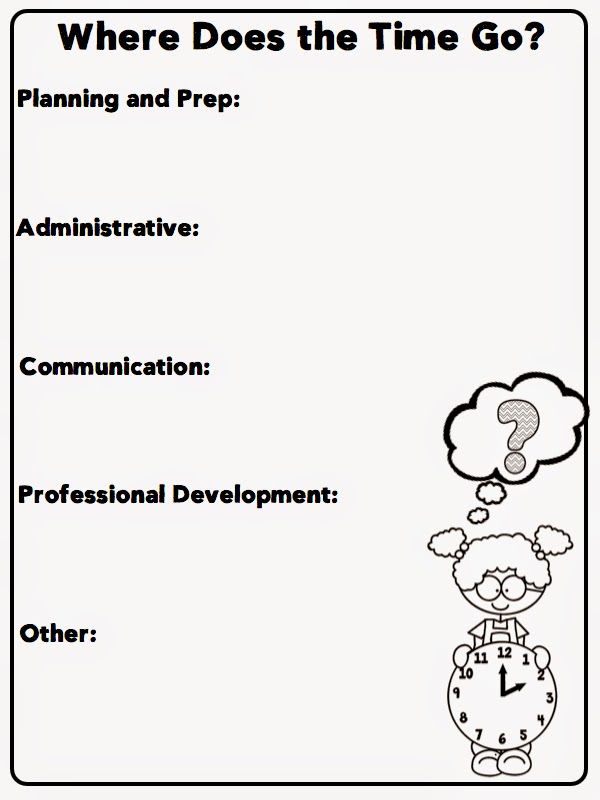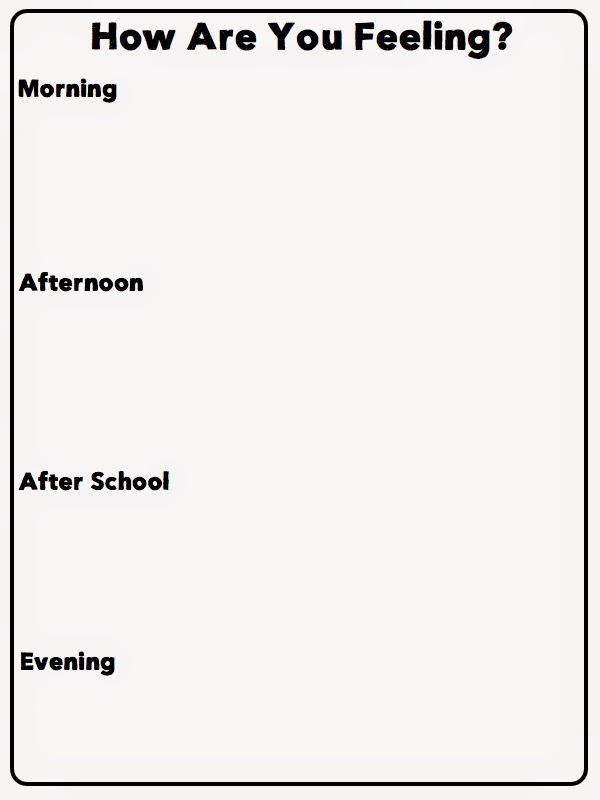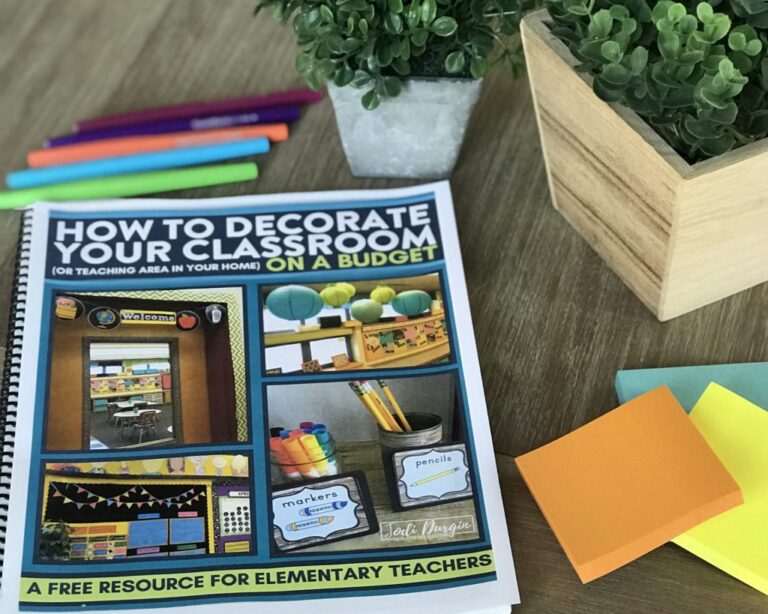Teachers do not have enough time in the day. As a result, our time at school or working on schoolwork bleeds into our nights and weekends. These 5 simple time savers for teachers will help you take back your personal time to do things that fill your cup and have you feeling ready to start the week or day. Check out the list of time savers for teachers below!

5 Time Savers for Teachers
Below are 5 time savers for teachers.
1. Reflect and Audit your Time
You know that saying, “You need to spend money to make money?”
That’s true about time as well.
In order to make the most of the ideas listed below and really start to find time savers that are going to be beneficial, you’ll need to take a few minutes to do the following:
- identify your strengths
- determine exactly what you need to accomplish on a daily and weekly basis
- pinpoint the common obstacles (both people and things) that hinder your efficiency
 |  |  |
1. What do you need to do?
Jot down all the tasks that you are responsible for. It is helpful to sort them into related categories in order to consolidate and streamline them in the future.
2. What obstacles do you face?
Make note of the things and people that distract you from taking tasks to completion in a timely manner. Be specific in your notes and thinking. For example, write Facebook or Instagram instead of “social media” and include the times you find yourself checking in. Think about coworkers who pop in to your classroom to chat or a collegue who takes frequently takes grade-level planning meetings off task. Consider technology issues such as fixing a jammed copier, restarting the computer, dealing with printer issues, etc.
3. How are you feeling?
Reflect on your energy levels at different times of the day. Determine when you are most productive and energetic. Focus on identifying the times, locations and situations where you are able to concentrate and complete tasks quickly in comparision to when you are feeling distracted. At the end of the day, highlight the times you felt positive (happy, productive, energetic, etc) in yellow. Highlight the times you did not (tired, frustrated, overwhelmed, etc) in orange. You may also want to make note of diet and exercise and the role these play for your personal productivity level.
2. Manage your Email Efficiently Using Strategies
The second on the list of time savers for teachers is managing email efficiently.
Email can save you lots of time, but if not managed properly it can cost you valuable time as well. When you check email throughout the day you open yourself to constant distraction. Use the email strategies below to save time.
Unsubscribe
We often find ourselves on mail lists that are of no value to us. Typically there is a link hidden somewhere within the text of each email that allows you to opt out of getting them. Do this!
Delete without Reading
Sometimes you receive emails that you know you don’t need to read without even opening them. This is especially true for promotional mailings alerting you to a sale. Simply delete these without taking the time read them.
Set Up Sorting Folder
Ideally you will want to respond to a message immediately so that it is not lingering as an undone task. This is not always possible. For that reason it is helpful to set up folders for messages that are awaiting an action. Typically you can get by with 3 folders: answer, do, and save. If you are not able to act immediately on a message, forward it to a folder or tag it with a label to answer or act upon it at a later time. If you need to save it for reference, move it to a saved folder to clear out your inbox.
Designate Times to Check Email
Avoid checking email throughout the day. Instead, check it first thing in the morning when you arrive at school to see if there are any messages that are time sensitive or contain information needed for that day (schedule changes, meetings, etc). Delete and sort emails quickly. Designate time after school to check it again and act/respond to the day’s messages as needed. Add these times to your daily schedule to help you stick to them. Be sure to communicate to your students’ families that you typically respond to emails in the afternoon.
Take it Offline
Often, we waste time stressing over how to respond or how to word an email tactfully. If you are trying to compose an email and it is taking more than a few seconds of thought it may be best to skip the email and make a quick phone call instead. This is especially true for email where “tone” may be wrongly inferred.
Be Aware of the Messages you Send
Before sending an email ask yourself: Is this email necessary? Will this email invite or require a response from the recipient? Simply put, the less emails you send, the less emails you’ll receive.
3. Learn How to Say No
The third on the list of time savers for teachers is learning how to say no.
Teachers are asked to do a lot of things in addition to the general expectations of teaching, prepping, and correcting. They are often asked to join extra committees, attend professional development and take on additional responsibilities and tasks. Does this sound familiar?
While many things can be very beneficial, others can simply spread your time to thin. It is important to become involved outside the classroom, but it is better to excel in one or two areas than be adequate (or worse) in many.
Get in the habit of responding to such requests (even small tasks) in one of two ways:
- If you know you can’t do it or simply don’t want to do it, then just say no immediately.
- If you are not comfortable being so dismissive then always respond with, “I will look at my schedule and responsibilities to see if I will have the amount of time it takes to ___ and will let you know ___.”
When using the latter approach be clear on when you will give a definitive answer and make sure it is in a short amount of time. Next, truly look at your schedule and your to do list for the time frame the request involves. Analyze if the request is feasible in conjunction with your other personal and professional commitments.
Then ask yourself the following questions:
- Does it greatly benefit the students?
- Will you take something valuable away from it?
- Can you add it to your teacher evidence binder?
- Will doing it or not doing it impact your teaching status?
- Is it a task that you can do quickly, but will greatly help someone else?
Also, think about why the request was made. Do you possess a skill that others don’t? Is there someone better or equally qualified for the job? Are you simply known to be someone who always says yes?
Keep in mind that just because you may currently have time available to do something, you may not in the future and take that into consideration when making your decision. This is especially true for agreeing to participate in committees that meet throughout the year. It may seem feasible at the moment, but as the months go on you may have much more on your plate. Look at the big picture.
Finally, while you are not always obligated to provide a reason for saying no, it is usually a good idea to share your reasoning with something like…
- “I appreciate you asking, but I have too much on my calendar right now.”
- “Thank you for thinking of me, however I am overcommited at the moment.”
- “I wish I could help, but I currently have too much on my schedule to allow me to properly…”
4. Invite Students to Help You
The fourth on the list of time savers for teachers is inviting students to help you.
Aside from yourself, your students know your classroom the best. In addition to the student job chart tasks, students can also assist you with completing many tasks that you would otherwise take on yourself.
The key is to utilize their eagerness and ability to help in an efficient and effective manner. You can accomplish this by listing tasks that they can complete that are not time sensitive as you think of them and scheduling a time for the children to assist in completing them.
Here are a few tips to make it a successful experience:
- Schedule a block of time outside the regular school day to have your helpers come in. I have found that 30-60 minutes once a week or once every other week is sufficient. Because this is not instructional time you can also use the time to do some of the administrative tasks that you need to do file, plan, etc.
- Obtain the proper permission from administration and/or parents.
- Select students who are capable of doing the jobs quickly and accurately. Because you may not want to exclude children you may consider sorting tasks by ability. Alternately you may enjoy inviting former students who are now older and capable of taking on more responsibility to come back in and help out.
- Have everything you need ready to go when the students arrive.
- Provide the students with a copy of the list of tasks that need completing. Allow them to check them off when they are done.
- When preparing science experiments, provide students with a list of materials. Have them sort them onto trays or into dishpans for easy distribution during class.
- When organizing math manipulatives, volunteers can count out and bag up pattern blocks, cubes, etc that you use for math lessons and activities.
- In the case of leveling books, capable students can use the Scholastic Book Wizard to type in book titles and record the reading level on the cover.
- When maintaining your library, students can check to make sure books are shelved properly by direction, level, genre, etc. This is also a good opportunity to dust the shelves and clean the area.
5. Prioritize and Let Go of Tasks
The fifth on the list of time savers for teachers is to prioritize and let go of tasks.
The truth is that it will never all get done. If you are a teacher, you will never EVER be the proud owner of a blank to-do list. It simply is not possible. Sure we can chip away at those “in your face” things that have official deadlines like report cards, lesson planning, returning parent emails, etc but the bottom line is there will always be a million and one other teacher-related tasks cluttering your mind. However, by prioritizing your responsibilities and being willing to let go of tasks that aren’t necessary you will have a stronger feeling of accomplishment and be less overwhelmed.
One of the best tips I have for helping teachers organize their classroom is to start by purging anything that does not need to be in the space. Simply put, the less you have the less you have to manage. The same is true for the never ending to do list.
In my classroom, I have had great success helping students manage their assignments with a “Must Do May Do” Board. The board simply lists the things that are not a choice and need to get done as well as the options for when the “must dos” are completed.
Typically, teachers write out a to-do list that sequentially lists tasks as they come to mind. Instead try listing the tasks in a 3 column format. In the left column, list the items that you must complete (report cards, lessons plans, etc). In the middle column, record the things that you should (change a bulletin board, clean out a filing cabinet, etc). The right column is for the list of things you would love to do… If you had the time.
Writing the list this way will force you to prioritize things right from the start and will make it easier for you to focus on what is most important and perhaps even eliminate some things that just aren’t necessary.
Be kind to yourself and learn to embrace the fact that there will always be something that should get done. The key is determining what needs to gets done immediately and what you can just let go of.
In closing, we hope this list of 5 time savers for teachers was helpful! If you liked this post, you may also be interested in the following:


